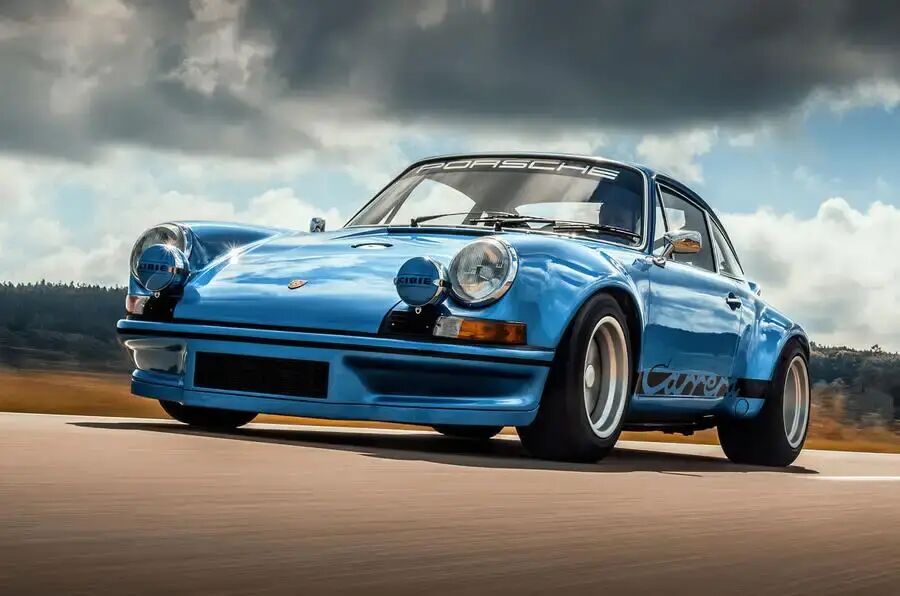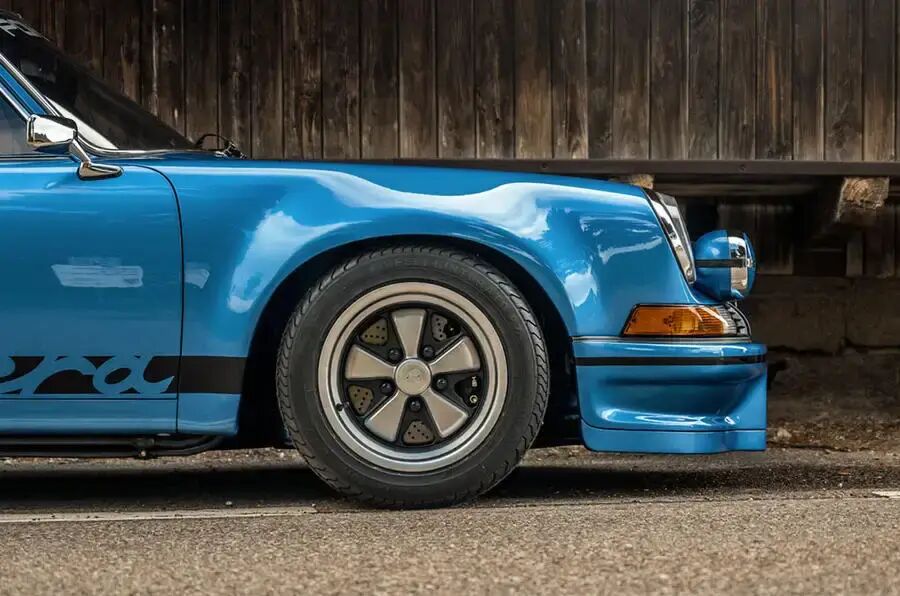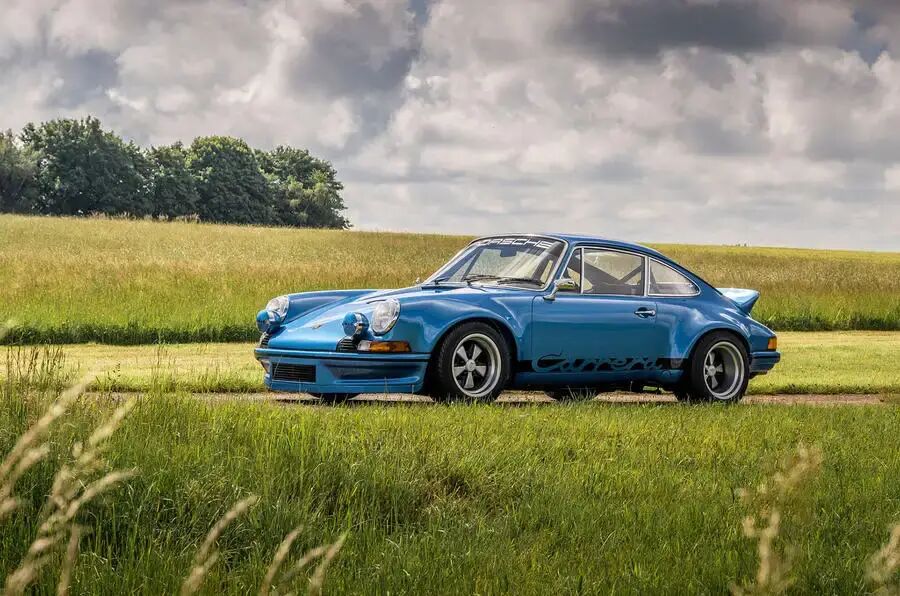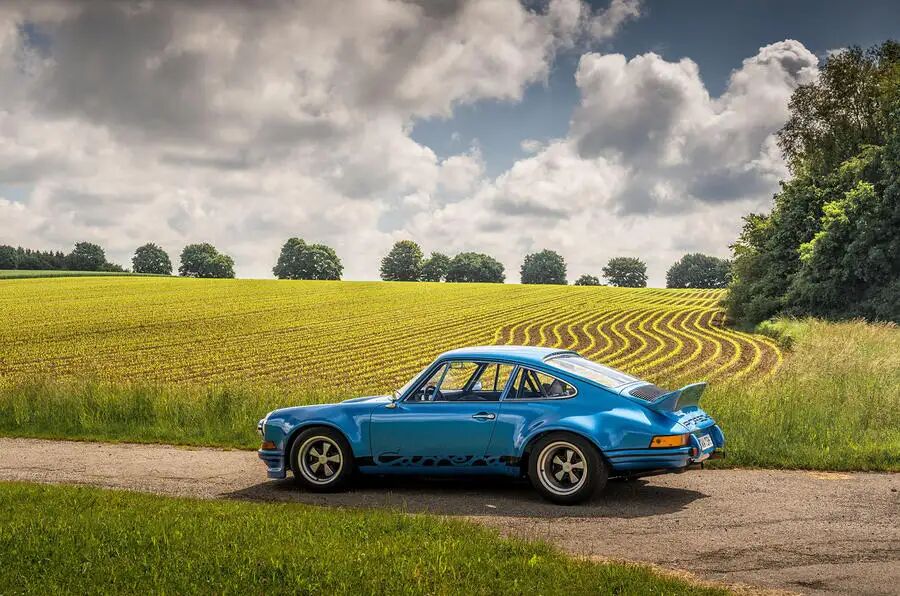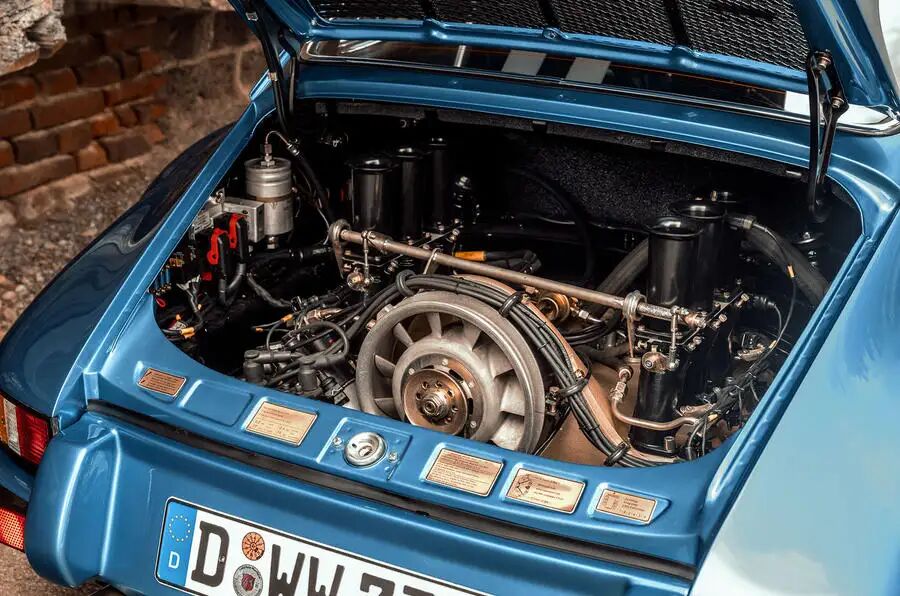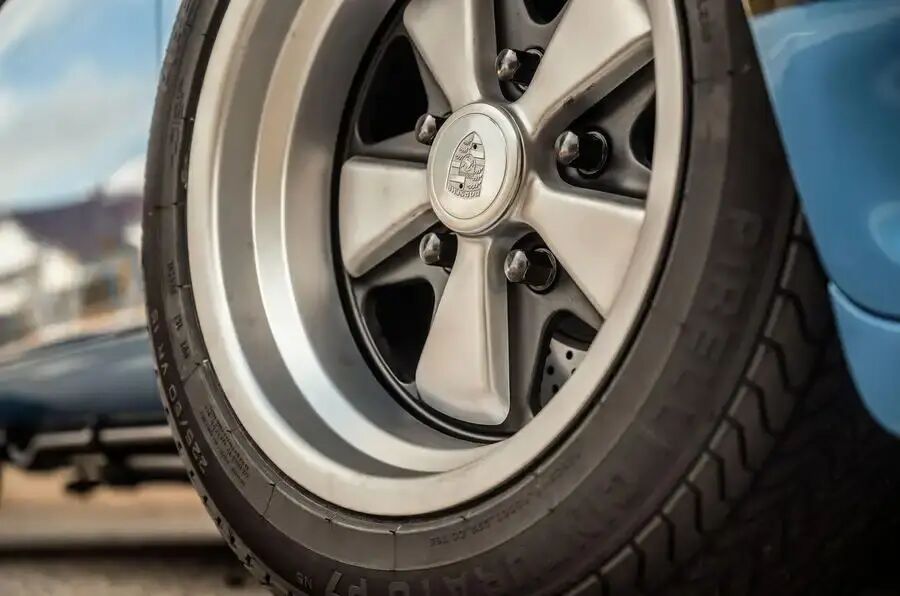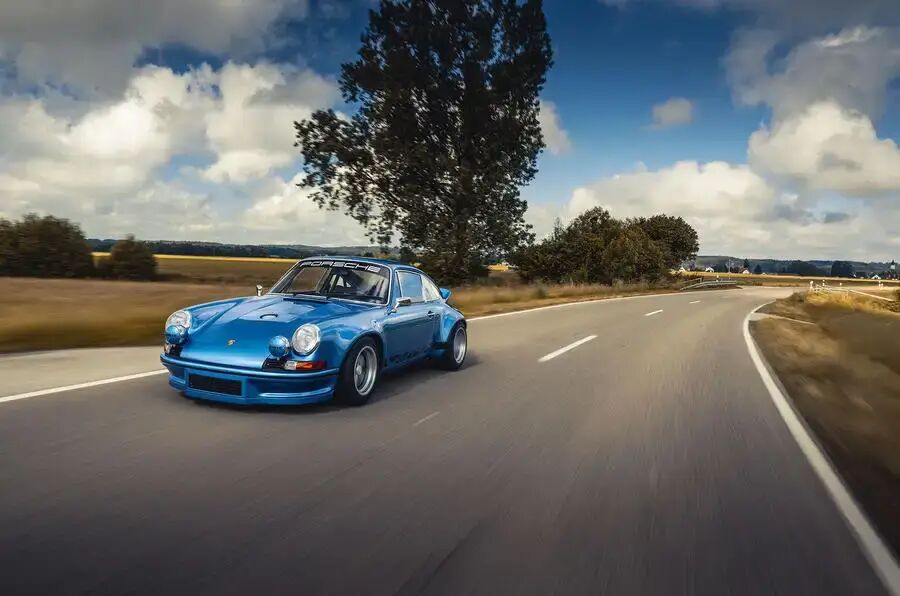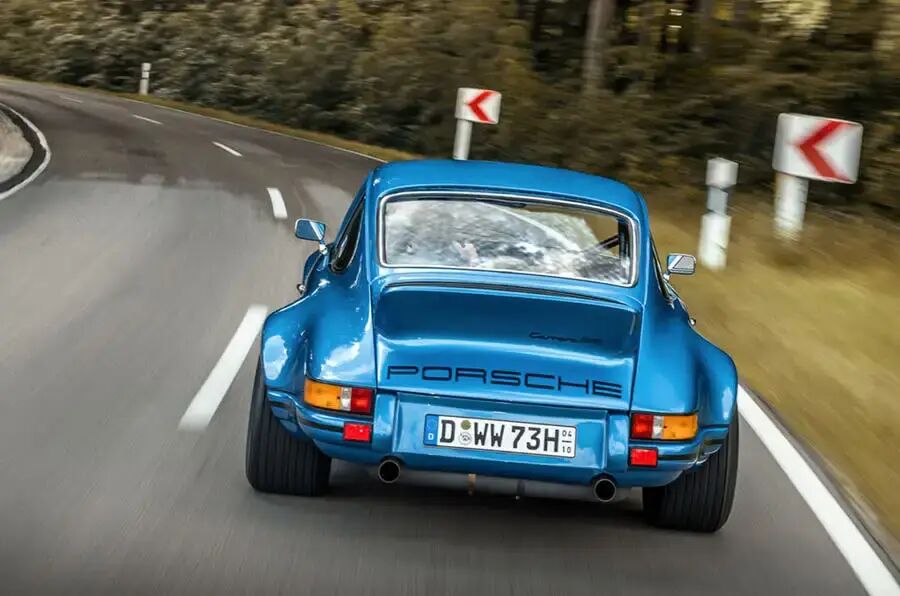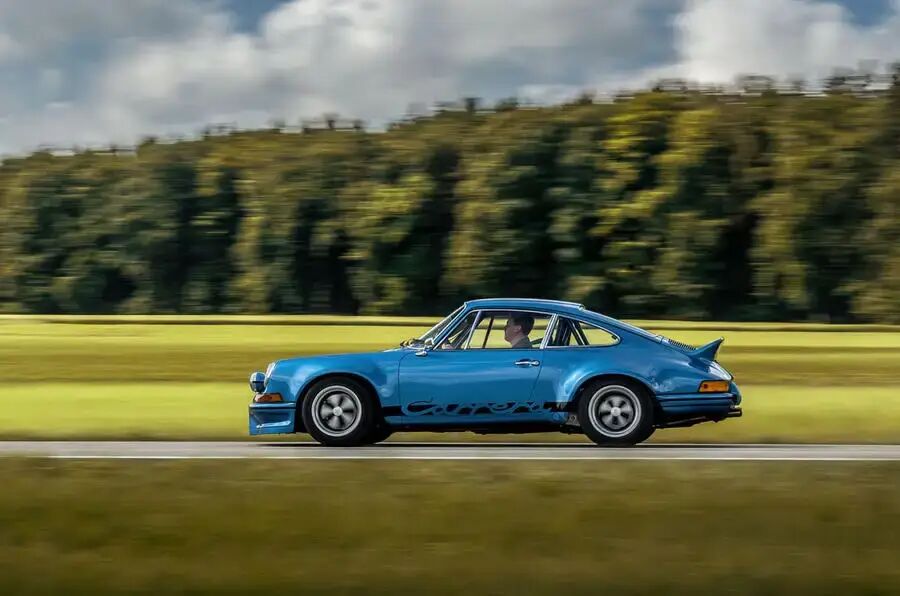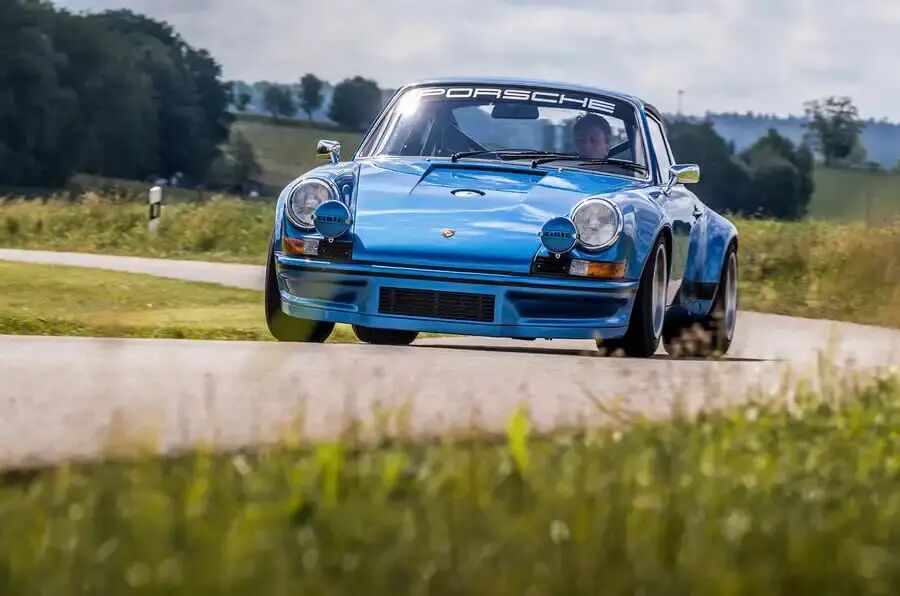King of Porsche specialists Ruf pays homage to perhaps the most desirable classic 911 of all.
In 2010, Alois Ruf Jr took a customer out in one of his family firm’s cars.
Now there’s nothing unusual in that act itself, particularly for an haute manufacturer, where production volumes are infinitesimal by wider industry standards and the boss is just as likely to be found observing test benches as they are sitting in the boardroom (assuming there is a boardroom).
You’ll be relieved to hear those Pirelli P7s – the tyre invented so Lamborghini could furnish the Countach LP400S with 345-section rear tyres – aren’t made from the original compound. It’s a more modern compound in the classic dimensions and tread pattern
The difference this time was that the car, though authentically Ruf, wasn’t referenced in any official literature. More than that, to anybody not embedded with the small factory operation in Pfaffenhausen in Bavaria, it didn’t even exist. An almost illicit one-off, its remit was to satisfy Alois Jr’s need for something that could express the wildness of 1970s Porsche motorsport, only in road-legal guise and with Ruf standards of everyday drivability.
No surprise that this idea hit the bullseye. The client decided he too needed one, and the result is this stunning Blau Metallic Ruf 3.4 RSR. It was completed only this year, and while that isn’t to say that every 3.4 RSR will take Ruf more than a decade to build – nothing like – the process is extremely involved. In fact, the transformation that makes original E Series 911 chassis become spectacular 1973 Carrera 2.8 RSR homage is so labour intensive that Ruf Jr says constructing each individual car is comparable to constructing a complete prototype.
It means that, in addition to fulfilling orders for the carbon-tubbed SCR supercar, plus the main business of restoring and gestating icons such as the 964 RCT Evo, and developing big-power, high-speed packages for the 992 911, Ruf has capacity for just one 3.4 RSR annually.
So what exactly is it, beyond being fantastically rare? The significance of the letters is well known: the original 2.8-litre Carrera RSR was the racing car the duck-tailed 2.7-litre Carrera RS homologated for Group 4. Today you’ll pay around $1.3 million for an RS but at least double that for an RSR, of which just 55 were initially made. Most RSRs are liveried up, but even on those lacking war paint, the upgrades to the 2.7 RS leap out. Most obvious are the distended rear arches, the low-hanging chin intake, and the twin exhaust outlets. In fact, if you want to know what a 2.8 RSR looks like, barring the Ruf-specific bonnet filler and charming fogs, simply drink in this 3.4 RSR.
Fold open the boot and there it is: the air-cooled flat six that forms the centrepiece of every classic Porsche driving experience. Ruf does not modify an original 2.8-litre RSR engine because, assuming you could find one, such an act would be tantamount to vandalism, even by hands as skilled and respected as these. Instead it finds a Carrera 3.2 block (which was strong enough to be shared with the 930 Turbo) and takes it out to 3.4 litres, with new pistons raising the compression ratio, more radical cams (marginally less wild than those found in an actual 2.8 RSR) and six ‘high velocity stacks’, each with their own throttle body. Just as important as any of that is the switch from mechanical injection to digital injection.
It’s all controlled by a modern Bosch Motronic ECU, which underpins the enhanced drivability of the 3.4 RSR, when compared with an original. Unlike that of its inspiration, this engine can adapt to different temperatures and octane ratings, and also features knock control. Naturally, as well as looking gloriously neat and honest, the engine bay is also near-identical to that of an original RSR in terms of appearance, though experts would be able to pick out small differences here and there.
In the metal this is a pint-sized thing; simple yet dripping in irresistible details, thuggish yet puppy-ish, and diminutive yet in possession of monstrous presence. What an utter honey, and just look at those fat, 285-section Pirelli P7s.
Slip over the low-slung members of the full roll cage and into the period seats and, though this is another 911 restomod, there’s no questionable artistic licence being exercised inside this cabin. It is to 2.8 RSR specification, though the originality of materials in combination with the level of fit and general solidity that modern-day Ruf achieves is captivating in itself. The place is hardcore but also habitable, and visibility is predictably superb compared with modern incarnations of the 911s, which themselves aren’t at all bad.
Turn the key in the ignition and Ruf’s 235kW engine – 15kW more than either the 2.8 RSR or 930 Turbo made – doesn’t fire immediately, but when it does, it settles into that heavy-set, gravelly and hollow gargle common to historic 911s of a certain seriousness. It’s intense and guttural; certainly likely to draw more attention than firing up the current Porsche 911 GT3. It idles cleanly and uniformly, mind, and while the clutch pedal would eventually give you calf muscles like Lance Armstrong’s, pulling away is no more tricky than doing so in a Caterham Seven.
Get going and the car’s engine and dynamics make good on the promises of the 3.4 RSR’s appearance, and how. Admittedly, glass-smooth Bavarian roads in early summer are not exactly your cold, rainy night in Stoke, but while Ruf has supposedly engineered true usability into this car, it’s still more likely to be used on high days like today, so this feels representative.
First thing is that the gearshift, which is handled not by the same gearbox originally fitted to the 2.8 RSR but by Porsche’s marginally later five-speed G50 unit (this necessitated fitting an entirely new rear torsion beam when the 3.4 RSR was on the jig), feels tight and precise. Like everything else about this project, the geometries and kinematics have been optimised, and it slots between gates with an intuitiveness that belies the long, crooked, geriatric-looking lever.
Second is the unassisted steering. It’s intensely heavy at low speeds and moderately sped by modern standards, but frees up quickly with road speed. By the time you’re at the national limit, it’s exhibiting almost fingertip lightness, only with a reassuring, steely core. You tip this car this way and that and it responds swiftly and uniformly, more or less asking you to up the ante and push it harder and harder still. The diddy dimensions play into this, though your intrinsic understanding that you can grab this 3.4 RSR by the scruff arrives mostly because the body control is so gloriously clean and predictable, keeping the car level and alert.
Ruf has reinforced the donor car’s shell in the same way that Porsche did for the original 2.7 RS, and there are further changes to make it all feel more RSR-y. You have the beautifully fitted cage, but the anti-roll bars are also thicker and much of the suspension is made from lightweight aluminium, with reinforced links at the back. The Bilstein damper rates are also greater than anything you’d have found in period, though this doesn’t seem to hurt pliancy or engender any nervousness. One rare mid-corner rut I manage to find is the sort to make you think very carefully before piling through at full speed in any old-school 911, but the 3.4 RSR just reacts and resets itself, its rear axle needing only one bite of the cherry to absorb the surprise, and the front not deviating from my chosen line at all. This kind of throttle-on surety, in an RSR homage wearing P7 tyres, with a greater power-to-weight ratio than a 996-generation 911 GT3, feels glorious. I reckon, possibly naively, that this car would be sensationally good fun in the wet.
And then there’s the engine. This is one of those rampant units that, despite the short gear ratios, goes on and on to the heavens, with an open-ended delivery and a long throttle that always seems to have an inch more travel in reserve, to uncork yet more ferocity. Fully lit, this is an extremely quick car, and one that feels quicker than the reality, such is the responsiveness of the throttle and shape of the power curve, which peaks at 7500rpm (though from the driver’s seat, it feels dramatically higher than that).
What Ruf’s added displacement also brings is plentiful torque at low to middling engine speeds, which makes this car comparatively effortless to stroke around. And of course there’s the modern management, which ensures seamless behaviour throughout the rev range. Neither do you lose the hallmark flat-six intake roar, which takes hold from 4500rpm and from there on just thickens and intensifies in its resonances until it’s almost painfully loud and sonorous, hollowing out your skull and setting your ears ringing. Glorious.
Ultimately, I think this is how this car wants to be known. Mad and bad, but not dangerous to know. It’s usable and more confidence-inspiring than anything of this ilk has the right to be, yet there’s a wildness here, and you sense it constantly bubbling away. The character of the car is beautifully judged in this sense. Factor in Ruf’s attention to detail, both for what you can and can’t see, and the result is very special indeed.
Richard Lane




